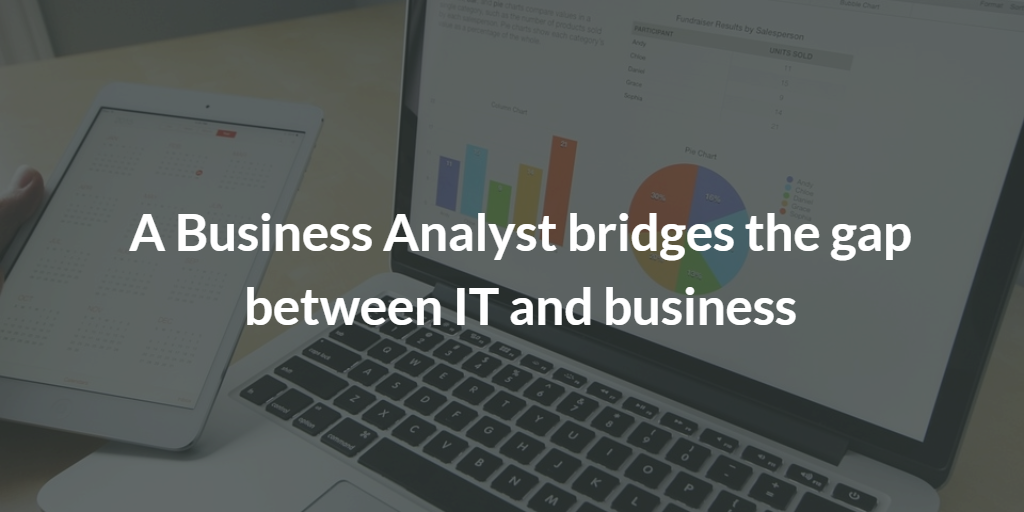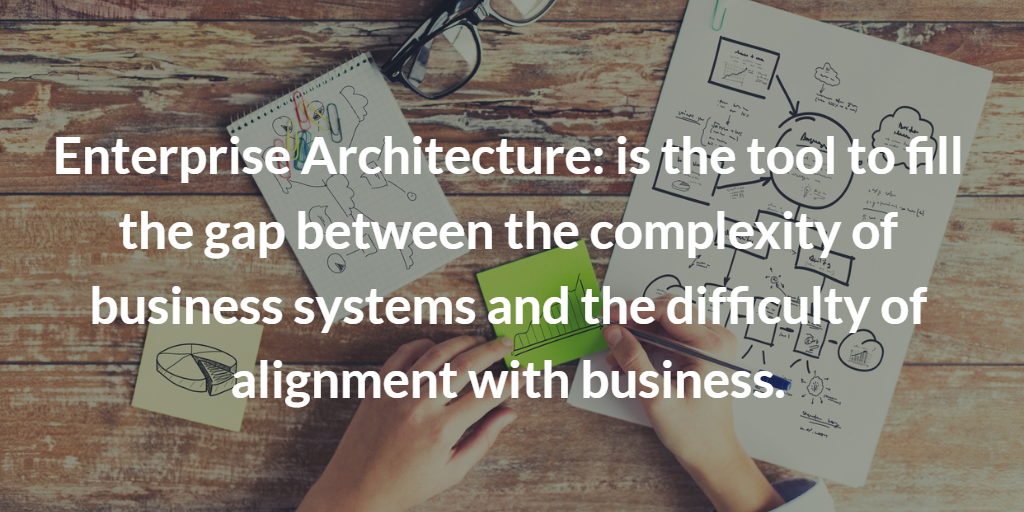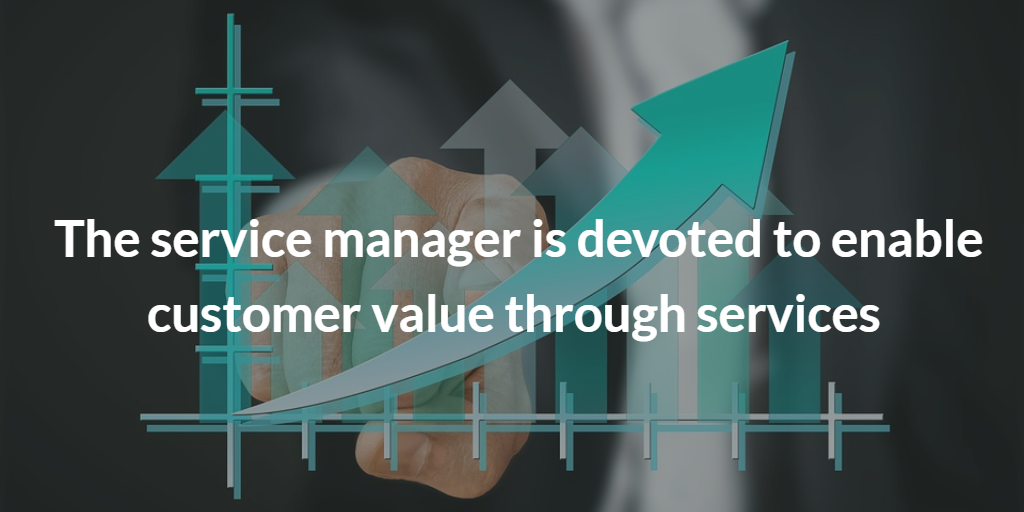News
View the latest inspiring and positive news and information about what's going on in the PM and IT world.

Business Analyst (BA) is someone who helps organizations improving processes, services, products through data analysis, documents and assess the business model or its integration with technology (help to bridge the gap between IT and the business). The Business Analyst is accountable for understanding business change needs, assessing their impact on the business, analysing and documenting requirements and supporting the communication and delivery of requirements with relevant stakeholders.
The role of the Business Analyst
The Business Analysts main responsibility is to help businesses to implement technology solutions in a cost-effective way. The professional should determine the requirements of a project or program and communicate them clearly to stakeholders.
This person is the professional responsible for facilitating technical solutions to business problems. In addition, a Business Analyst defines, analyzes and documents requirements by studying the overall business and information needs of an organization.
The Responsibilities of the Business Analyst
The responsibilities of a business analyst can vary from business to business. Some responsibilities may be limited to IT-related projects only, while other organisations may involve the business analysts in areas such as sales, finance, marketing or operations.
Anyway, the business analyst needs to maintain a holistic view of the business systems with a focus on 4 key areas:
- Organisation
- People
- Process
- Technology
The business analyst’s common responsibilities are:
- Creating a detailed business analysis, outlining problems, opportunities and solutions for a business.
- Analyse the structure of a business, how it uses technology and what its goals are.
- Formulate ways for businesses to improve.
- Strategic analysis.
- Process and value stream mapping.
- Skills and competency mapping.
- Help design, document and maintain system processes.
- Oversee the implementation of new technology and systems.
- Communicate key insights and findings to the product team.
- Defining business requirements and reporting them back to stakeholders.
The Competencies of the Business Analyst
The competencies according to the BABOK® guide are identifiable in six main skill sets:
- Analytical Thinking & Problem-Solving.
- Behavioural Characteristics.
- Business Knowledge.
- Communication Skills.
- Interaction Skills.
- Software Applications.
The Analytical Thinking & Problem Solving competencies are the core skills for a business analyst and include
- Creative Thinking,
- Decision Making,
- Problem Solving,
- Critical Thinking.
Behavioural Characteristics skills are fundamental to get Trust since the BA will access to information, systems and other high-value assets and will be involved in critical projects. These skills include
- Interpersonal and consultative skills
- Time management and organisational skills
- Business Principles & Practices
- Industry Knowledge
- Organizational Knowledge
The BA must ensure to Communicate key insights and findings in a clear manner and this is the reason why the Communication Skills are key competences like
- Oral and written communication skills
- Visual Communication
- Active listening
The Business Analysts facilitate interactions between stakeholders in order to help them resolve disagreements regarding the priority and nature of requirements, to help stakeholders articulate their needs. These interaction-skills includes:
- Facilitation & Negotiation
- Leadership and management skills
- Teamwork
A business analyst is expected to have knowledge in applications that help his/her daily business activity, and s/he needs to be able to use many types of software from the most popular to the most specialised like document management systems, content management systems, which are sometimes built specifically for organisation s/he is working for.

Enterprise Architecture (EA) is the analysis of the overall structure of an organization, which describes its components, namely:
- operational processes
- information systems and flows
- methodologies and technologies used
- principles and guidelines
- other key information (e.g. objectives and location).
Using the words of The Open Group:
“The architecture of the enterprise allows us to determine the elements that make up the enterprise and how they are related to each other”.
The enterprise architecture provides a static picture of the company, to be able to understand it better, but also a dynamic vision, 'a map' which shows the state of departure and the state of arrival and which serves to put into practice the strategies and the objectives of the enterprise in a determined temporal arc. This map, made up of requirements, guiding principles and models, serves to define how the various components of the company will evolve to reach the desired state and represents the company in its entirety. The enterprise architecture can be defined as a holistic approach that considers all the facets that compose the enterprise, from the business to the technological aspects. Within the EA there are four different types of architecture:
- Business Architecture Starting from the strengths of the company tries to trace new processes and structures that are more in line with the objectives and the research of innovation;
- Information Architecture It aims to improve the quantity and quality of information available to the organization
- Applications Architecture It describes the applications used in the company, their relationships and interactions with business processes and users;
- Technology Architecture It describes the infrastructure and includes all infrastructure services, technological components (such as servers, networks, middleware and user support tools).
History and advantages of the Enterprise Architecture. Why is it increasingly important?
The concept of Enterprise Architecture is quite young: it was born in the second half of the ’80s, with the publication of the article “Framework for Information Systems Architecture” by John A. Zachman on the IBM Systems Journal. Zachman later stated that he would like to change his name to “Framework for Enterprise Architecture” because the framework actually has nothing to do with information systems.
The article has the merit of introducing the fundamental concepts for enterprise architecture and takes into account two issues: the complexity of business systems and the difficulty of alignment with the business. Those two aspects become in the years more and more important and they can’t be ignored anymore.
IT systems are becoming increasingly complex and it is becoming increasingly difficult to keep these systems in line with business needs.
Thanks to the knowledge of an organization’s architecture, it is possible to fill the gap between strategy and implementation, control operational risks and ensure the quality of processes and data.
The architecture helps to:
- create a shared corporate vision,
- align IT and business,
- control the costs,
- prepare the company for a change,
- promote the agility inside the company,
- avoid duplication of technology,
- unlock the information flow,
- ensure compliance with regulations,
- integrate the business processes.
Nowadays many organizations still do not fully understand the importance of architecture for their company. Many companies focus on building and operating the system, without designing the organization as a whole and having a holistic vision. Enterprise architecture operates strategically and modern organisations have the opportunity to use it as a support to the transformation of their business. Enterprise Architecture can be a strategic element for the management of the complexity of corporate architectures and their continuous transformation.

Enabling a Project Management method means having useful guidance with all the processes necessary to successfully manage a project. The pivot is on the choice of the methodology to pick for our project: the way of working and how to communicate with the team during all the project length depends from the methodology you chose to enable.
A Frequently asked question from our customer is:” When to use AgilePM? What kind of projects it fits?”
The kind of project you have to manage is the key to understand the methodology to use. Let’s examine together some of the characteristics of the projects that are manageable with Agile methodologies:- The characteristics of the final output aren’t completely known during your starting-up.
- Requisites could change or develop during the execution of the projects.
- Frequent changes are required.
- The user wants to receive some benefits before the closing of the project itself.
- The product to realize can create incremental business value.
- Your working environment is subject to continual change.
4 things to know before using Agile Project Management (AgilePM)
AgilePM is the one and only Agile methodology addressed to Project Management. It could be a good compromise between enacting a Project Management framework and putting into practice Agile principles.
The question is: "Is your team ready to enable AgilePM to manage a project?"
Below the 4 key points to successfully enact the methodology:
- The business vision leading the project has to be clear enough and understood by all the project members. If the vision isn’t shared and understood within all the project members, the risk is to focus on details of low importance not enacting a good time-management. The Agile Business Consortium suggests a simple question to be answered in order to understand if the activity we are performing is aligned with the strategic vision: “Doing this activity put me closer to the realization of our vision?”
- All team members are aware that the project will be successful if and only if the product will be delivered respecting the criteria of acceptance and according to the agreed scheduling. In an Agile Project, everybody is focussed on the business drivers and on delivering on time. The pursuit of perfection is not recommended.
- All project members accept that the requisites will be sketched during the initial phase and the details will be caught and defined during the development of the project Going in-depth with the definition of the requisites during the initial phases is very risky and it could end in a miscalculation: it doesn’t allow the development of the solution during the processes requiring an approach addressed to “change control”.What matters is that the team knows WHY the final solution is important (the scope and the benefit that the project will generate). So, be sure that the results catch the business exigencies not being a pre-fixed solution.
- All the team members accept that change to requisites is unavoidable and only by accepting change is possible to deliver the right solution The development team has to accept change in order to deliver an optimal solution. The necessary changes have to have the priority on the overall workload.
Why these key-points are fundamental?
An Agile project is considered successful if respect the boundaries of time and quality. Is very important that the project team is aligned with these and the other criteria enlisted in the Project Approach Questionnaire (PAQ) developed by the Agile Business Consortium. It is a checklist comprising 17 bullet points which are very useful in evaluating if the Project Success Factors have a good chance to be fulfilled.
The answers to the PAQ will have an impact on how the project will be managed.
PAQ can help you to evaluate all the risks linked to the choice of a particular Agile method moreover, it can guide you to understand the risk linked to the overall project success. Download your copy here!


Nowadays IT leaders and IT professionals are faced with an increasingly fast and demanding world. They must deliver effective IT services at an increasingly rapid pace, meeting an extreme competitive demand. In order to successfully face all these challenges, there is only one imperative: improve skills.
ITIL 4 expands on previous versions by providing a practical and flexible basis to support organizations on their journey to the new world of digital transformation. The applicability of ITIL is now much broader, with a particular emphasis on
- the world of business and technology,
- how it works today,
- how it will work in the future with Agile, DevOps, Lean, IT governance, leadership,
- digital transformation.
You got ITIL 4 Foundation certification. What about other ITIL v4 modules?
After obtaining the ITIL 4 Foundation certification, you can continue your ITIL journey with one of the four new ITIL 4 Managing Professional (MP) stream modules. ITIL 4 Managing Professional modules provide practical and technical knowledge that can help you successfully manage IT services, teams and workflows.
Two modules are already available:
- ITIL 4 Specialist: Create, Deliver and Support (CDS).
- ITIL 4 Strategist: Direct, Plan and Improve (DPI).
The other two ITIL4 modules will be launched in 2020:
QRP International organizes accredited ITIL 4 CDS and ITIL 4 DPI courses in Zurich. We will add the other two courses as soon as they will be published by Axelos. How these two modules help you to improve your IT skills?
ITIL 4 Create, Deliver & Support (CDS)
helps you to become a ‘Specialist’ who can:
- Effectively measure service performance and improve efficiencies.
- Integrate new technologies into IT and digital services.
Follow the link to learn all the details about this module and to know the dates on our calendar: ITIL 4 CDS.
ITIL 4 Direct, Plan & Improve (DPI)
helps you to become a ‘Specialist’ who can:
- Build strong and effective strategic direction and break down siloes.
- Direct organizational change and develop essential change management techniques.
Follow the link to learn all the details about this module and to know the dates on our calendar: ITIL 4 DPI.
Do you have questions about ITIL 4 Streams? Do you want to train your team or would you like to understand which module is right for you? Write to us at switzerland@qrpinternational.com
Do you want to stay up to date on ITIL 4 and the streams after ITIL Foundation? Sign up to our newsletter!

At QRP International we are committed to providing the best quality of training as well as the broadest offer, to make sure we can answer to our customers' needs.
This is what we kept in mind when working to prepare the new 2018 training calendar, now available at this link to be checked out: find out all upcoming dates for your Project, Programme, Portfolio, PMO, IT and Change Management training!
OUR TRAINING OFFER FOR 2020
As ATO (Accredited Training Organization) QRP International offers the full range of Project, Programme, Portfolio, PMO and Change Management accredited training:
- Project Management: PRINCE2, PMP, PM²
- Agile Project Management: AgilePM, PRINCE2 Agile
- Programme Management: MSP
- Portfolio Management: MoP
- PMO Management: P3O
- Change Management: Change Management
- IT Service Management: ITIL 4, DevOps
NEED TO TRAIN YOUR TEAM?
Looking for an easy and efficient solution to train your team of colleagues, or department? Get in touch to discover our in-house, tailored and customized solutions!

A Service Manager is usually responsible for defining the final service(s) by managing service level agreements and ensuring services meet the business need.
He/She manages the Service Department team members, measure and analyze work performances, proposes improvements to processes, including customer service interaction (complaints and requests).
The role of the Service Manager
The Service Manager main responsibility is to interact with the business team, understand the SLAs and supervise the service team to support and maintain the infrastructures. This professional is responsible to enable value for customers through services.
The Responsibilities of the Service Manager
The Service Manager’s common responsibilities are
- Oversee and guide all activities of the Service team.
- Coordinate SLA creations. (through Interaction with the business team).
- Ensure team follows best practices and maintain service level agreements.
- Monitors department issues and client complaints.
- Develop problem management and service improvement plans.
- Ensure customer/business, client, support, technical parties are represented in the definition and evolution of services.
- Offer customer service.
- Maintain customer relationships.
The Competencies of the Service Manager
Core competencies of the Service Manager are identifiable in two main skill sets:
- Business Competences.
- Strategic thinking.
- Business analysis.
- Effective Delegation.
- Managing risks.
- Prioritization & Time Management.
- Clear Communication.
- Business Relationship Management.
- Technical Competencies.
- Broad technical understanding.
- Service Level Management.
- Service Engineering.
- Customer Focus.







